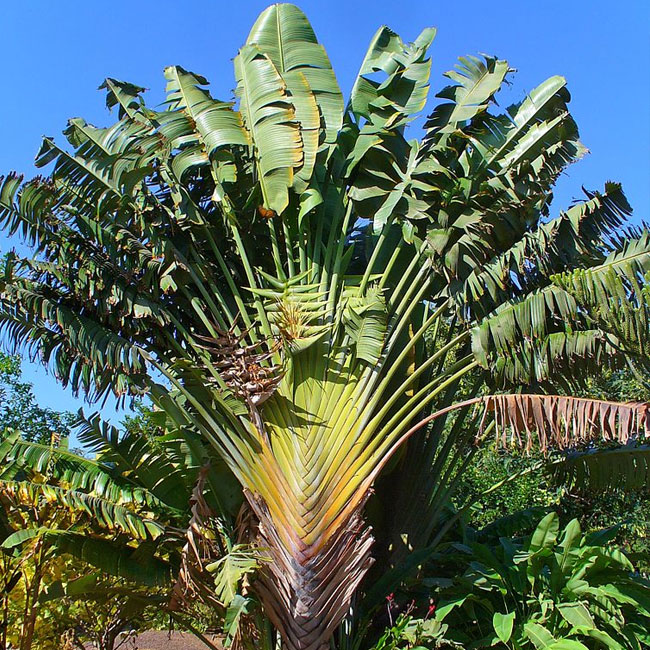
The Travelers Palm Tree, scientifically known as Ravenala madagascariensis, stands out as one of the world’s most recognizable palm trees, thanks to its stunning fronds that transition in color from orange to yellow to green.
It is native to the island of Madagascar, which is located in the Indian Ocean off the southeastern coast of Africa. It is not naturally found anywhere else in the world and is endemic to Madagascar.
This adaptable palm thrives in a wide range of soil types, making it a perfect choice for creating a delightful shaded area in your yard or by the pool.
Quick Facts:
| Scientific name: | Ravenala madagascariensis |
| Common names: | Travelers Palm, Travellers Palm, Traveler’s Tree. |
| Origin: | Native to Madagascar. |
| Growth Rate: | Moderate. Up to 40-60 ft tall with 10-15 ft wide spread. |
| Cold Tolerance: | USDA Zones 10a (30 – 35 F) to 11 (above 40 F). |
| Light Req: | Full sun. |
| Water Req: | Moderate. |
| Soil Req: | Widely adaptable. |
| Fruit: | Yes. Blue. Not edible. |
| Propagation: | By seeds, germinating in a few months. By division of clumps. |
Identifying Characteristics of the Travelers Palm
In its early stages, the Travelers Palm boasts a subterranean trunk that grows beneath the surface. As it matures, it develops a distinctive short green trunk, approximately 1 foot in diameter, adorned with unique leaf scar rings.
With approximately 30-35 large, fan-shaped leaves that reach lengths of up to 10 feet, this palm’s foliage bears a striking resemblance to banana leaves. These leaves are symmetrically grouped, lending the tree the appearance of a hand fan.
During high winds, the leaves can take on a feather-like appearance due to their shredding. The leaf stems exhibit a captivating gradient of color, ranging from orange at the base, transitioning to yellow in the middle, and culminating in a vibrant green nearer the tip.
An interesting feature of the Travelers Palm is its leaf stems’ ability to store a significant amount of rainwater, which can serve as an emergency drinking supply during droughts. The palm derives its name from numerous accounts of travelers seeking this tree as a source of water.
Flowers and Fruits of the Travelers
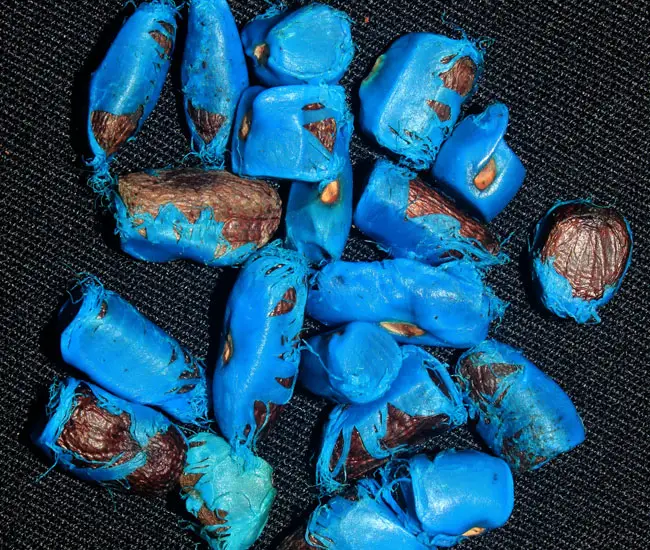
The Travelers Palm produces white flowers, supported by large green flower stalks, with some blossoms reaching sizes as large as 2 feet in diameter. The leaf stalks resemble narrow bowls, efficiently collecting rainwater and becoming quite heavy.
Following the blooming phase, brown fruits appear, opening to reveal stunningly bright blue seeds inside.
Caring for the Travelers Palm
Ravenala madagascariensis exhibits a medium growth rate, reaching heights of 40-60 feet and boasting a spread of 10-15 feet.
Remarkably, the Travelers Palm Tree can withstand cold temperatures down to 30°F, making it suitable for cultivation in USDA Zones 10a (30 – 35°F) to 11 (above 40°F). While it thrives in full sun, it can also adapt to light shade.
This palm thrives in moist, well-drained soil, and its adaptability extends to both sandy and clayey soils. Native to Madagascar, the Travelers Palm Tree effortlessly fits into various soil types and serves as an impressive centerpiece in any landscape.
To prevent nutritional deficiencies, it’s recommended to apply a high-quality palm fertilizer with a continuous-release formula twice a year during the growing season.
Propagation can be achieved through seeds or division of clumps, providing options for cultivating this captivating palm.
Travelers Palm Tree Pictures
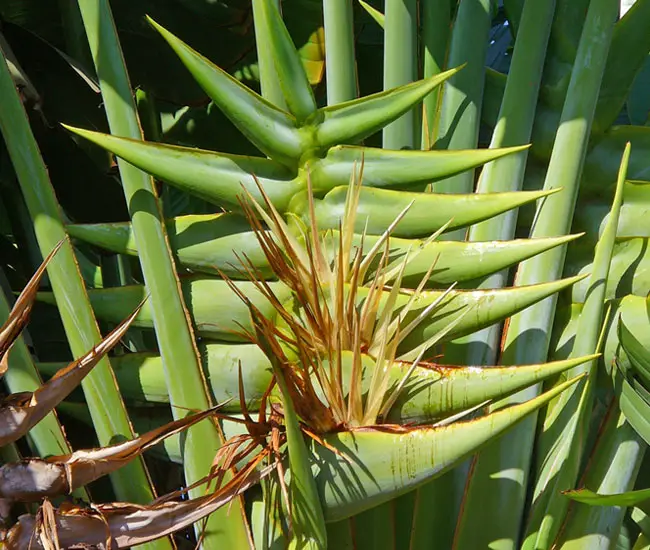
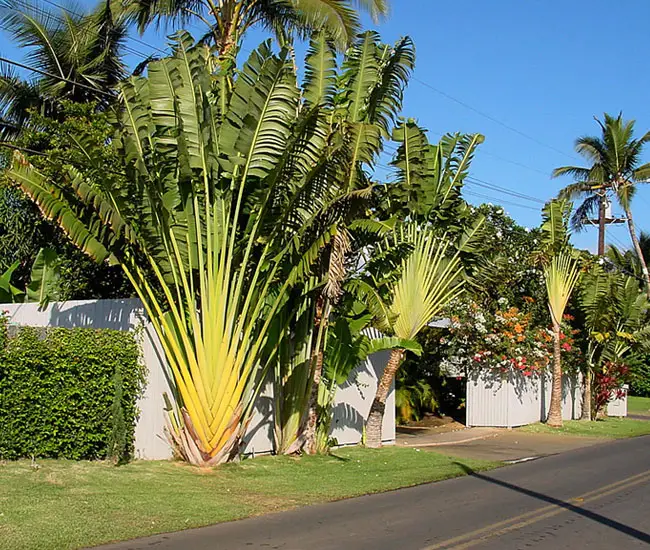
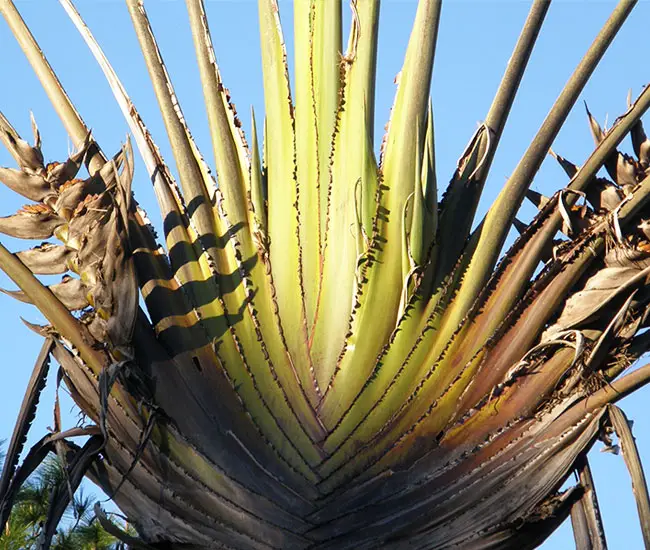
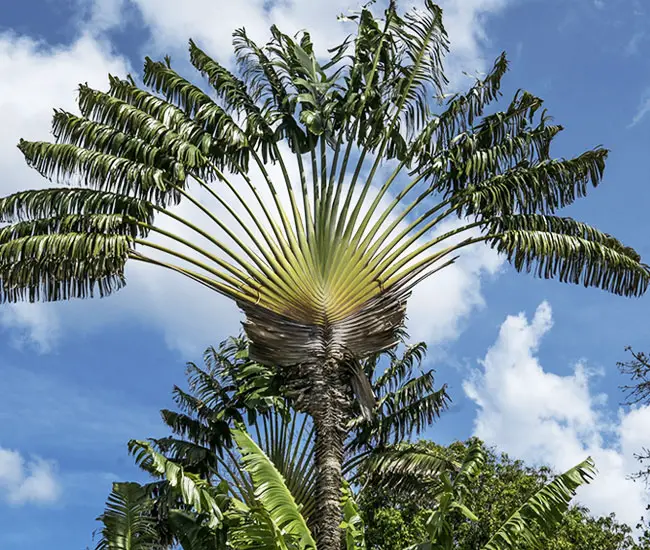
More information can be found on Floridata site.

I need three 8′ travelers palms for the interior.
Looking for a couple of palm trees to be used outside a pool cage. Must be 4 to 5 feet high and thick at the bottom for real privacy. Thanks.
I’m trying to figure out how long it takes until the trunk becomes visible? We like the way it looks, but typically before it gets the trunk.